How to cite this page Comment citer cette page
Items
In item set
People
-
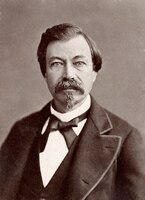 de Mahy, François Césaire A member of Réunion's Creole elite - his family were slave owners and his father was mayor of Saint-Pierre and a colonial councillor - he studied at the Collège Royal in Saint-Denis de Bourbon, then at the Lycée Henri IV in Paris. Doctor of Medicine in 1855, he returned to Saint-Pierre de la Réunion in 1857, where he practiced as a physician until 1870. In November 1870, he was one of two moderate Republican deputies elected on the island, and held office until his death in 1906. A member of the colonial party and the colonial group in the Assembly, he actively supported conquest projects. He played a decisive role in the colonization of Madagascar. In January-February 1883, he was acting Minister of the Navy and Colonies, and organized an expedition against Grande-Île, in which a battalion of Creole volunteers from La Réunion took part. He multiplied his efforts to involve France in the takeover of the country. He was not satisfied with the imposition of a protectorate in 1885, and spoke out tirelessly to convince the French elite of the need to colonize Madagascar, not only as a member of parliament, but also as Honorary President of the Congress of French Geographical Societies, and finally as Minister of the Navy and Colonies, a post he held again from December 1887 to March 30, 1888. After the country's annexation in 1895, he supported Gallieni's "pacification" campaigns, which resulted in 50,000 to 100,000 deaths among the inhabitants of Madagascar. In 1898, François de Mahy displayed his anti-Dreyfus commitment and joined the Ligue de la Patrie, founded in reaction to the founding of the Ligue des Droits de l'Homme.
de Mahy, François Césaire A member of Réunion's Creole elite - his family were slave owners and his father was mayor of Saint-Pierre and a colonial councillor - he studied at the Collège Royal in Saint-Denis de Bourbon, then at the Lycée Henri IV in Paris. Doctor of Medicine in 1855, he returned to Saint-Pierre de la Réunion in 1857, where he practiced as a physician until 1870. In November 1870, he was one of two moderate Republican deputies elected on the island, and held office until his death in 1906. A member of the colonial party and the colonial group in the Assembly, he actively supported conquest projects. He played a decisive role in the colonization of Madagascar. In January-February 1883, he was acting Minister of the Navy and Colonies, and organized an expedition against Grande-Île, in which a battalion of Creole volunteers from La Réunion took part. He multiplied his efforts to involve France in the takeover of the country. He was not satisfied with the imposition of a protectorate in 1885, and spoke out tirelessly to convince the French elite of the need to colonize Madagascar, not only as a member of parliament, but also as Honorary President of the Congress of French Geographical Societies, and finally as Minister of the Navy and Colonies, a post he held again from December 1887 to March 30, 1888. After the country's annexation in 1895, he supported Gallieni's "pacification" campaigns, which resulted in 50,000 to 100,000 deaths among the inhabitants of Madagascar. In 1898, François de Mahy displayed his anti-Dreyfus commitment and joined the Ligue de la Patrie, founded in reaction to the founding of the Ligue des Droits de l'Homme. -
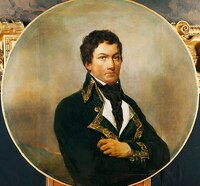 de Miranda, Francisco Venezuelan military leader and revolutionary in the eighteenth and early nineteenth centuries.
de Miranda, Francisco Venezuelan military leader and revolutionary in the eighteenth and early nineteenth centuries. -
de Pas, Jean-Marc French sculptor in the twentieth and twenty-first centuries.
-
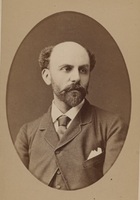 de Saint-Marceaux, René French sculptor in the nineteenth and early twentieth centuries.
de Saint-Marceaux, René French sculptor in the nineteenth and early twentieth centuries. -
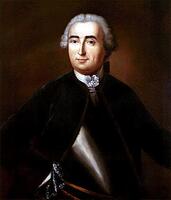 de Saint-Vérent, marquis de Montcalm, Louis Joseph French soldier in the eighteenth century. Montcalm was the commander of the French forces in North America during the Seven Years' War (1756–1763).
de Saint-Vérent, marquis de Montcalm, Louis Joseph French soldier in the eighteenth century. Montcalm was the commander of the French forces in North America during the Seven Years' War (1756–1763). -
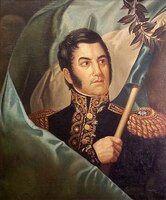 de San Martín y Matorras, José Francisco Argentine military general in the eighteenth and nineteenth centuries. San Martin one of the primary leaders of South America's struggle for independence from the Spanish Empire.
de San Martín y Matorras, José Francisco Argentine military general in the eighteenth and nineteenth centuries. San Martin one of the primary leaders of South America's struggle for independence from the Spanish Empire. -
de Villebois-Mareuil, Georges Militaire français, membre de l’extrême droite monarchiste, il participe à la fondation de la Ligue d’extrême droite de l’Action française en 1898. Anglophobe, il s’engage aux côtés des Boers contre les Britanniques en Afrique australe en 1899 et trouve la mort lors de la bataille de Boshof.
-
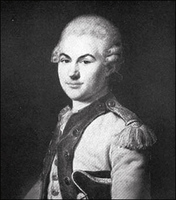 de Vimeur, Donatien-Marie-Joseph, vicomte de Rochambeau French military commander. Rochambeau was Governor of Saint-Domingue from 1792 to 1793 and later fought to re-establish slavery in the colony from 1802 to 1803 after the death of General Charles Leclerc.
de Vimeur, Donatien-Marie-Joseph, vicomte de Rochambeau French military commander. Rochambeau was Governor of Saint-Domingue from 1792 to 1793 and later fought to re-establish slavery in the colony from 1802 to 1803 after the death of General Charles Leclerc. -
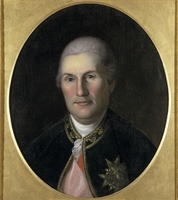 de Vimeur, Jean-Baptiste Donatien, comte de Rochambeau French commander-in-chief during the American Revolutionary War.
de Vimeur, Jean-Baptiste Donatien, comte de Rochambeau French commander-in-chief during the American Revolutionary War. -
Delamarre, Raymond French sculptor active in the twentieth century.
-
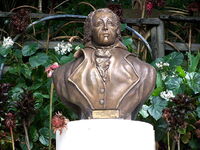 Delgrès, Louis Black abolitionist and soldier in the eighteenth century. Delgrès was born as a free black man in Saint Pierre, Martinique in 1766. He fought in the Caribbean during the French Revolution, and was briefly taken captive by the British in 1796 and held in a prison in Portchester. After a prisoner swap, Delgrès returned to Guadeloupe and signed a proclamation titled "À l'Univers entier, le dernier cri de l'innocence et du désespoir" on May 10 1802 in opposition to Napoleon's attempts to re-impose slavery on the French Caribbean.
Delgrès, Louis Black abolitionist and soldier in the eighteenth century. Delgrès was born as a free black man in Saint Pierre, Martinique in 1766. He fought in the Caribbean during the French Revolution, and was briefly taken captive by the British in 1796 and held in a prison in Portchester. After a prisoner swap, Delgrès returned to Guadeloupe and signed a proclamation titled "À l'Univers entier, le dernier cri de l'innocence et du désespoir" on May 10 1802 in opposition to Napoleon's attempts to re-impose slavery on the French Caribbean. -
Deproge, Ernest Avocat comme son grand-père Louis Fabien, condamné au début du XIXe siècle en même temps que Cyrille Bissette pour avoir réclamé des droits pour les libres de couleur, il est élu député de la Martinique de 1882 à 1898. Il fonde le Parti Radical Socialiste Martiniquais et dirige de 1886 à 1893 un journal, La Petite France, où il défend l’assimilation, demandant le développement de l’instruction et l’application de la conscription. Battu aux élections de 1898, il se retire de la politique et mène une carrière administrative impériale, à la Réunion puis en France.
-
Descomps, Jean-Bernard French sculptor in the nineteenth and twentieth centuries.
-
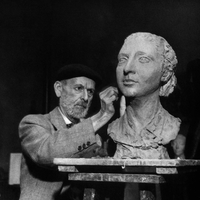 Despiau, Charles French sculptor in the nineteenth and twentieth centuries.
Despiau, Charles French sculptor in the nineteenth and twentieth centuries. -
Desruelles, Félix-Alexandre French sculptor in the nineteenth and twentieth centuries.
-
Destreez, Jules-Constant French sculptor in the nineteenth and twentieth centuries.
-
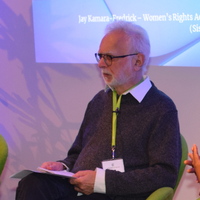 Dhondy, Farrukh Indian-British writer and activist based in London.
Dhondy, Farrukh Indian-British writer and activist based in London. -
Dick, William Reid Scottish sculptor in the nineteenth and twentieth centuries. Some of his notable colonial works include the statue of David Livingstone in Zimbabwe and the statues of Lord Irwin and the Earl of Willingdon in Coronation Park, Delhi.
-
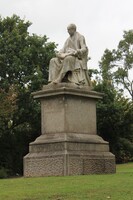 Dinham, John British businessman and philanthropist in Exeter. Dinham made his wealth as a tea-merchant based in London.
Dinham, John British businessman and philanthropist in Exeter. Dinham made his wealth as a tea-merchant based in London. -
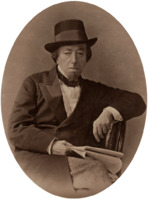 Disraeli, Benjamin Prime Minister of the United Kingdom (1868; 1874-1880)
Disraeli, Benjamin Prime Minister of the United Kingdom (1868; 1874-1880) -
Dizengremel, Laury Sculptor
-
Dobson, Benjamin Alfred English textile machinery manufacturer and mayor of Bolton.
-
Dolle, A. French sculptor active in the early twentieth century.
-
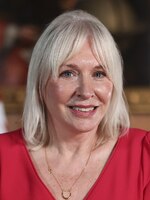 Dorries, Nadine Secretary of State for Digital, Culture, Media and Sport (September 2021-September 2022)
Dorries, Nadine Secretary of State for Digital, Culture, Media and Sport (September 2021-September 2022) -
Doubleday, John British sculptor
-
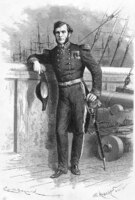 Doudart de Lagrée, Ernest French naval officer and colonial explorer in Asia in the nineteenth-century.
Doudart de Lagrée, Ernest French naval officer and colonial explorer in Asia in the nineteenth-century. -
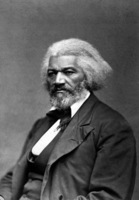 Douglass, Frederick American abolitionist, suffragist, writer, and statesman. Born into slavery, Douglass became one of the most important abolitionists and civil rights leaders of the nineteenth century. He made a number of visits to the British Isles during his life, visiting England, Scotland, Wales, and Ireland. The website 'Frederick Douglass in Britain and Ireland' maps where Douglass and other transatlantic abolitionists gave speeches.
Douglass, Frederick American abolitionist, suffragist, writer, and statesman. Born into slavery, Douglass became one of the most important abolitionists and civil rights leaders of the nineteenth century. He made a number of visits to the British Isles during his life, visiting England, Scotland, Wales, and Ireland. The website 'Frederick Douglass in Britain and Ireland' maps where Douglass and other transatlantic abolitionists gave speeches. -
 Dowden, Oliver Secretary of State for Digital, Culture, Media and Sport (February 2020-September 2021) and Deputy Prime Minister of the United Kingdom (2023-).
Dowden, Oliver Secretary of State for Digital, Culture, Media and Sport (February 2020-September 2021) and Deputy Prime Minister of the United Kingdom (2023-). -
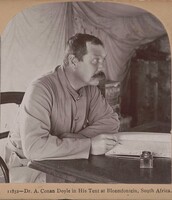 Doyle, Arthur Conan British writer and physician in the nineteenth and twentieth centuries. Doyle is most well known as the author of the Sherlock Holmes stories, but he was also involved in, and wrote about, the British Empire and imperial politics. Doyle served as a volunteer physician in Bloemfontein between March and June 1900 during the Second Boer War (1899-1902), and wrote about the war in The Great Boer War (1900) and The War in South Africa: Its Cause and Conduct (1902). In 1909, he wrote The Crime of the Congo in support of E.D. Morel and Roger Casement's campaign for the reform of the Congo Free State. Doyle's fictional works also touch on imperial themes. The famous character of Dr. Watson, for instance, was written as a veteran of the Second Anglo-Afghan War (1878-1880), while the science fiction novel The Lost World (1912) depicts an imaginary expedition to South America.
Doyle, Arthur Conan British writer and physician in the nineteenth and twentieth centuries. Doyle is most well known as the author of the Sherlock Holmes stories, but he was also involved in, and wrote about, the British Empire and imperial politics. Doyle served as a volunteer physician in Bloemfontein between March and June 1900 during the Second Boer War (1899-1902), and wrote about the war in The Great Boer War (1900) and The War in South Africa: Its Cause and Conduct (1902). In 1909, he wrote The Crime of the Congo in support of E.D. Morel and Roger Casement's campaign for the reform of the Congo Free State. Doyle's fictional works also touch on imperial themes. The famous character of Dr. Watson, for instance, was written as a veteran of the Second Anglo-Afghan War (1878-1880), while the science fiction novel The Lost World (1912) depicts an imaginary expedition to South America. -
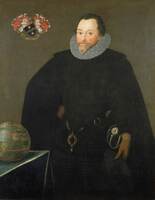 Drake, Francis English sailor, privateer and slave-trader in the sixteenth century.
Drake, Francis English sailor, privateer and slave-trader in the sixteenth century. -
Dresser, Madge British historian with research interests in the history of Atlantic Slavery, of ethnic minorities in Britain, slavery and memory, gender history and pubic history. She has worked for the University of West England and the University of Bristol, and as consultant for museums and public bodies such as the National Archives.
-
Drivier, Léon-Ernest French sculptor in the nineteenth and twentieth centuries.
-
Drivier, Léon-Ernest Ecole des Beaux-Arts de Paris, trained in Auguste Rodin's studio. In 1918, he was commissioned to create the official bust of "Victorious France". He was also responsible for "La France (Athéna) bringing peace and prosperity to the colonies", a statue placed on the steps of the Palais des Colonies during the Exposition Coloniale Internationale in Vincennes, then installed in the square leading to the palace. Elected member of the Académie des Beaux-Arts in 1943.
-
Drury, Alfred English sculptor in the nineteenth and twentieth centuries.
-
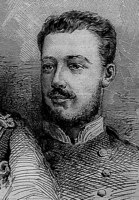 Duboc, Émile French naval officer in West Africa and Indochina in the nineteenth and twentieth century.
Duboc, Émile French naval officer in West Africa and Indochina in the nineteenth and twentieth century. -
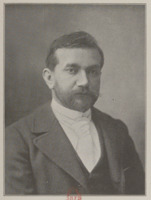 Dubois, Ernest Henri French sculptor in the nineteenth and twentieth centuries.
Dubois, Ernest Henri French sculptor in the nineteenth and twentieth centuries. -
Dubray, Vital-Gabriel French sculptor in the nineteenth century.
-
Duckett the Elder, Thomas English sculptor in the nineteenth century.
-
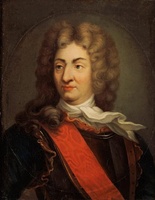 Duguay-Trouin, René French naval officer and slave trader in the seventeenth and eighteenth centuries.
Duguay-Trouin, René French naval officer and slave trader in the seventeenth and eighteenth centuries. -
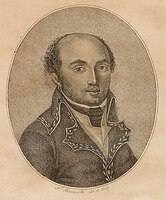 Dumas-Davy de La Palleterie, Thomas Alexandre Black French military general from Saint-Domingue who fought in the French Revolution. Dumas was the father of the famed French writer Alexandre Dumas (1802-1870).
Dumas-Davy de La Palleterie, Thomas Alexandre Black French military general from Saint-Domingue who fought in the French Revolution. Dumas was the father of the famed French writer Alexandre Dumas (1802-1870). -
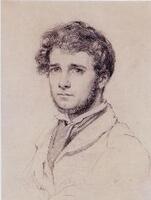 Dumont, Augustin Alexandre French sculptor in the nineteenth century.
Dumont, Augustin Alexandre French sculptor in the nineteenth century. -
Dumont, Jacques-Edme French neoclassical sculptor active from the 1770s to the 1840s.
-
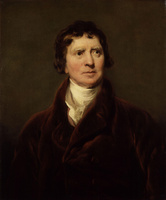 Dundas, Henry, 1st Viscount Melville Eighteenth-century Scottish politician who played key roles in shaping domestic and international policy. Dundas was instrumental in slowing down the full abolition of slavery through amendments introduced to Parliamentary legislation. He was the President of the Board of Control, or the Parliamentary Committee that supervised the affairs of the British East India Company, especially its political and military activities in India.
Dundas, Henry, 1st Viscount Melville Eighteenth-century Scottish politician who played key roles in shaping domestic and international policy. Dundas was instrumental in slowing down the full abolition of slavery through amendments introduced to Parliamentary legislation. He was the President of the Board of Control, or the Parliamentary Committee that supervised the affairs of the British East India Company, especially its political and military activities in India. -
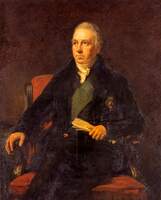 Dundas, Robert, 2nd Viscount Melville British politician in the eighteenth and nineteenth centuries. Dundas was President of the Board of Control (1807-1809; 1809-1812), Chief Secretary for Ireland (1809), and First Lord of the Admiralty (1812-1827; 1828-1830).
Dundas, Robert, 2nd Viscount Melville British politician in the eighteenth and nineteenth centuries. Dundas was President of the Board of Control (1807-1809; 1809-1812), Chief Secretary for Ireland (1809), and First Lord of the Admiralty (1812-1827; 1828-1830). -
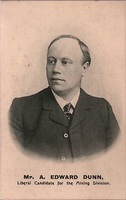 Dunn, Albert Edward British politician in the nineteenth and twentieth centuries. Dunn was Mayor of Exeter (1900-1901) and Member of Parliament for Camborne (1906-1910). As Chairman of the Buller Memorial Committee, Dunn spearheaded the campaign to build a statue of Redvers Buller in Exeter from 1901 to 1905.
Dunn, Albert Edward British politician in the nineteenth and twentieth centuries. Dunn was Mayor of Exeter (1900-1901) and Member of Parliament for Camborne (1906-1910). As Chairman of the Buller Memorial Committee, Dunn spearheaded the campaign to build a statue of Redvers Buller in Exeter from 1901 to 1905. -
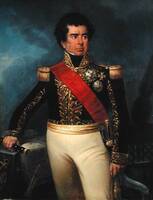 Duperré, Victor Guy French naval officer and Minister of the Navy and Colonies (1834-1836; 1839-1840; 1840-1843).
Duperré, Victor Guy French naval officer and Minister of the Navy and Colonies (1834-1836; 1839-1840; 1840-1843). -
Durand, Joanny French sculptor active in the twentieth century.
-
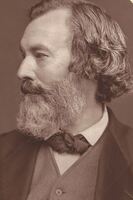 Durham, Joseph English sculptor in the nineteenth century.
Durham, Joseph English sculptor in the nineteenth century. -
Dutertre, Louis French colonial soldier who died in Sidi Brahim in Algeria in 1845.
-
Earle, Thomas English sculptor in the nineteenth century.